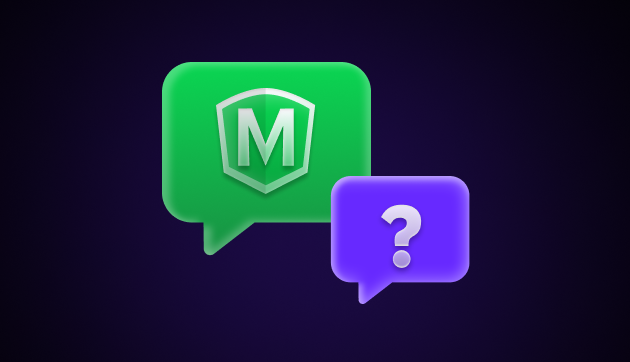
Types of CSS: A Comprehensive Guide to Styling Web Pages
Dec 31, 2024 5 Min Read 3457 Views
(Last Updated)
In the world of web development, Cascading Style Sheets (CSS) play a crucial role in enhancing the appearance and design of web pages. With CSS, you can transform a simple HTML structure into an attractive and visually appealing website.
Understanding the different types of CSS is essential for web developers and designers as it allows them to choose the most suitable approach for styling their web pages.
In this comprehensive guide, we will explore the various types of CSS, including Inline CSS, Internal or Embedded CSS, and External CSS. Each type has its unique features and advantages, and we will delve into them one by one.
Table of contents
- The 3 Main Types of CSS
- Inline CSS
- Internal or Embedded CSS
- External CSS
- Comparison: Inline vs Internal vs External CSS
- Concluding Thoughts...
- FAQs
- What is CSS and its features?
- What are 3 CSS properties?
- What is CSS syntax?
- What are the advantages of CSS?
The 3 Main Types of CSS
Now let us discuss the types of CSS, their benefits, drawbacks, and examples in detail:
1. Inline CSS
What is Inline CSS?
Inline CSS is a method of applying styling directly to individual HTML elements using the “style” attribute within the HTML tag. This allows for specific styling of individual elements within the HTML document, overriding any external or internal styles.
Benefits and Drawbacks of Inline CSS
Inline CSS provides a quick and easy way to apply specific styles to individual HTML elements. It offers the advantage of overriding any external or internal styles, making it useful for making quick changes to specific elements without affecting the overall styling of the page.
However, there are some drawbacks to using inline CSS. One major drawback is that it doesn’t separate the content from the design, which goes against the principle of separation of concerns in front-end web development. This can make the code more difficult to read and maintain, especially for larger projects.
Also Read: 10 Best HTML and CSS Project Ideas for Beginners
Inline CSS Example
Let’s take a look at an example to understand how inline CSS works. Suppose we have a paragraph element that we want to style with a specific color and font size:
<p style="color: blue; font-size: 16px;">This is a paragraph with inline CSS.</p>In the example above, we have applied inline CSS directly to the paragraph element. We have set the color to blue and the font size to 16 pixels. The style attribute within the paragraph tag allows us to apply these specific styles to the element.
Before we move to the next topic, make sure that you are strong in the full-stack development basics. If not, consider enrolling for a professionally certified online full-stack web development course by a recognized institution that can also offer you an industry-grade certificate that boosts your resume.
2. Internal or Embedded CSS
What is Internal or Embedded CSS?
Internal or Embedded CSS is defined within the HTML document’s <style> tag. It allows you to define styles that will be applied to multiple elements within the HTML document. The internal CSS is placed within the <head> section of the HTML document.
Benefits of Internal CSS
Internal CSS offers a more organized approach to styling web pages compared to inline CSS. It allows you to define styles for multiple elements in one place, making it easier to maintain and update the styles across the entire HTML document.
Internal CSS also provides a higher level of specificity compared to external CSS. This means that the styles defined internally will take precedence over external styles, but can be overridden by inline styles.
Must Explore: Top 11 CSS Frameworks for Front-End Developers: A Comprehensive Guide
Internal CSS Example
Let’s consider the following example to understand how internal CSS works. Suppose we have an HTML document with multiple paragraphs, and we want to apply a specific font family and color to all the paragraphs:
<!DOCTYPE html>
<html>
<head>
<style>
p {
font-family: Arial, sans-serif;
color: #333333;
}
</style>
</head>
<body>
<p>This is the first paragraph.</p>
<p>This is the second paragraph.</p>
<p>This is the third paragraph.</p>
</body>
</html>In the example above, we have defined an internal CSS style using the <style> tag within the <head> section of the HTML document. The style targets all the <p> elements and applies the font family “Arial, sans-serif” and the color “#333333” to them.
Also Read: A Complete Guide to HTML and CSS for Beginners
3. External CSS
What is External CSS?
External CSS is a separate file that contains CSS styles and is linked to the HTML document using the <link> tag. This allows for the separation of concerns, where the HTML document only contains the structure and content, while the CSS file handles all the styling.
Advantages of External CSS
1. External CSS offers several advantages over inline and internal CSS. Firstly, it promotes a clean and modular approach to web development, as the HTML structure and CSS styles are kept separate. This makes the code easier to read, maintain, and update.
2. Secondly, external CSS allows for the reusability of styles across multiple HTML documents. By linking the same CSS file to different HTML pages, you can ensure consistent styling throughout your website, making it easier to maintain a cohesive design.
3. Lastly, external CSS can be cached by the browser, resulting in faster page load times. Once the CSS file is loaded, it can be reused for subsequent pages, reducing the amount of data that needs to be transferred.
Your first program: How to Create a Simple “Hello World” Page Using HTML
External CSS Example
Let’s see an example of how external CSS is used. Suppose we have an HTML document and a separate CSS file named “styles.css”. We can link the CSS file to the HTML document using the <link> tag:
<!DOCTYPE html>
<html>
<head>
<link rel="stylesheet" type="text/css" href="styles.css">
</head>
<body>
<h1>Welcome to My Website</h1>
<p>This is a paragraph with external CSS styling.</p>
</body>
</html>In the example above, we have linked the “styles.css” file to the HTML document using the <link> tag within the <head> section. The CSS styles defined in the “styles.css” file will be applied to the HTML elements within the <body> section of the document.
Comparison: Inline vs Internal vs External CSS
Now that we have explored the different types of CSS, let’s compare them based on various factors to understand their differences and use cases.
| Comparison Metric | Inline CSS | Internal CSS | External CSS |
|---|---|---|---|
| Flexibility | Inline CSS offers the highest level of flexibility, as it allows for specific styling of individual elements. It can override any external or internal styles, making it suitable for quick changes to specific elements. | Internal CSS provides a balance between flexibility and maintainability. It allows for the styling of multiple elements within the HTML document, making it suitable for more complex styling requirements. | External CSS offers the least flexibility, as the styles defined in the external CSS file apply to multiple HTML elements across different pages. However, it promotes consistency and reusability, making it ideal for maintaining a cohesive design across an entire website. |
| Maintainability | Inline CSS can be difficult to maintain in larger projects, as the styles are directly applied to individual elements within the HTML document. This can make the code more cluttered and harder to read, especially when multiple elements have different inline styles. | Internal CSS offers better maintainability compared to inline CSS, as the styles are defined within the <style> tag in the <head> section of the HTML document. This allows for the centralization of styles, making it easier to update and manage them. | External CSS provides the highest level of maintainability, as the styles are defined in a separate CSS file. This allows for the separation of concerns, making the code cleaner and more organized. Updates to the styles can be made in one place, and they will automatically apply to all linked HTML documents. |
| Performance | Inline CSS has the lowest impact on performance, as the styles are applied directly to the HTML elements. This eliminates the need for additional HTTP requests to fetch external CSS files, resulting in faster page load times. | Internal CSS also has a minimal impact on performance, as the styles are defined within the HTML document itself. However, there is still an additional overhead compared to inline CSS, as the styles need to be parsed and applied to the elements. | External CSS can have a slightly higher impact on performance, as the CSS file needs to be fetched from the server through an HTTP request. However, once the CSS file is cached by the browser, subsequent page loads will be faster. |
If you want to learn more about programming with HTML, and CSS as well as web development and make a successful career out of it, then you must sign up for the Certified Full Stack Development Course, offered by GUVI, which gives you in-depth knowledge of the practical implementation of all frontend as well as backend development through various real-life FSD projects.
Concluding Thoughts…
Overall, the choice between inline, internal, and external CSS depends on the specific requirements of your project. For small, quick changes, inline CSS can be useful.
Internal CSS strikes a balance between flexibility and maintainability, while external CSS promotes reusability and consistency across multiple pages. Keep following the blog to learn more!
Must Read | Complete CSS Tutorial: Essential Guide to Understand CSS
FAQs
What is CSS and its features?
CSS (Cascading Style Sheets) is a style sheet language used for describing the presentation of a document written in a markup language like HTML. Its features include styling, layout, and formatting of web pages.
What are 3 CSS properties?
Three common CSS properties are “color” for text color, “font size” for text size, and “margin” for spacing around elements.
What is CSS syntax?
CSS syntax consists of selectors that target HTML elements and declarations that define how those elements should be styled. Declarations are made up of property-value pairs.
What are the advantages of CSS?
Advantages of CSS include easier maintenance, faster page loading, greater design consistency, and improved accessibility for different devices and screen sizes.































Did you enjoy this article?